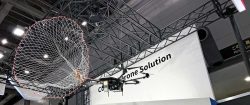Driving the Wrong Way on Expressways: Utilize Latest Technology to Prevent Accidents
16:17 JST, August 27, 2024
There has been a spate of accidents involving cars driving in the wrong direction on expressways. It is necessary to not only examine where wrong-way driving is most likely to occur but also to use the latest technology, such as artificial intelligence, to ensure safety.
A minivan driving the wrong way on the outbound line of the Tohoku Expressway in Nasushiobara, Tochigi Prefecture, collided head-on with a passenger car on Aug. 15, killing the drivers of both vehicles. Two elementary school children in the passenger car were seriously injured.
On the following day, Aug. 16, a car driving the wrong way on the inbound line of the same expressway collided with a motorcycle, and the man on the motorcycle was seriously injured.
Driving in the wrong direction on a highway involves a high risk of a head-on collision at high speed and can easily lead to a serious accident. How to stop wrong-way driving is an important issue.
According to the Land, Infrastructure, Transport and Tourism Ministry, there are around 200 cases involving wrong-way driving on expressways every year. Of these, about 20% have resulted in accidents involving property damage or resulting in injury or death.
A survey conducted last year found that about 60% of drivers involved in wrong-way driving accidents were 65 years or older. Of all the cases involving wrong-way driving, about 40% were due to negligence, such as misunderstandings, and dementia was suspected in as many as about 30%.
The most common starting points for wrong-way driving were said to be where service areas merge with main lines and at the entrances and exits of expressways.
The transport ministry and expressway companies must conduct detailed analyses of the occurrence of wrong-way driving, and if structural problems are found, they must be promptly corrected. Efforts should also be made to strengthen cognitive function tests for drivers, among other steps.
Efforts are being made in some areas, such as introducing devices that detect vehicles going the wrong way and display a warning to the drivers, as well as installing bumps on the surface of roads to ensure that a vehicle is strongly jarred if it travels in the wrong direction. In these locations, the frequency of wrong-way driving has reportedly been reduced to one-seventh of previous levels.
It is important to further expand such measures. It is hoped that the application of these measures to national and prefectural roads and elsewhere, where wrong-way driving is more likely to occur, will also be examined.
The transport ministry and other entities are considering the introduction of technology that uses AI to analyze images from about 15,600 traffic monitoring cameras installed on expressways.
According to the ministry, if the technology detects a car driving in the wrong direction, it will issue an alert or send a warning to the navigation and other systems of the car in question and other cars in the vicinity. It is important to create a safer traffic system by also utilizing private-sector technology.
It is said that drivers going the wrong way are often seen driving in the passing lane, believing that they are traveling on the left side of two or three lanes.
It is important for drivers to habitually travel in the left lane so that they can avoid vehicles going the wrong way if they encounter them. If they notice a car driving the wrong way, they should take refuge on the shoulder of the road or some other safe place and make an emergency call to the police.
(From The Yomiuri Shimbun, Aug. 27, 2024)
"Editorial & Columns" POPULAR ARTICLE
-

Artificial Intelligence Expands Possibilities for Foreign Language Learners
-

Build Intellectual, Physical Strength, As Well As Communicative Power / Japan Should Move from Beneficiary to Shaper of World Order
-

Global Economy in Turmoil: Prevent Free Trade System from Going Adrift / Risks to Financial Markets Must Be Heeded
-

Japan-China Strain Set to Persist as Beijing Officials Self-Interestedly Bash Tokyo; Takaichi Unlikely to Back Down
-

French and German Ambassadors to Japan Call for Democracies to Unite in Defense against Russian Disinformation
JN ACCESS RANKING
-

As Chinese Tourists Shun Japan, Hotels and Stores Suffer
-

Osaka-Kansai Expo’s Economic Impact Estimated at ¥3.6 Trillion, Takes Actual Visitor Numbers into Account
-

Japan Govt Adopts Measures to Curb Mega Solar Power Plant Projects Amid Environmental Concerns
-

BOJ Gov. Ueda: Highly Likely Mechanism for Rising Wages, Prices Will Be Maintained
-

Economic Security Panels Debate Supply Chains, Rare Earths; Participants Emphasize Importance of Cooperation Among Allies




















